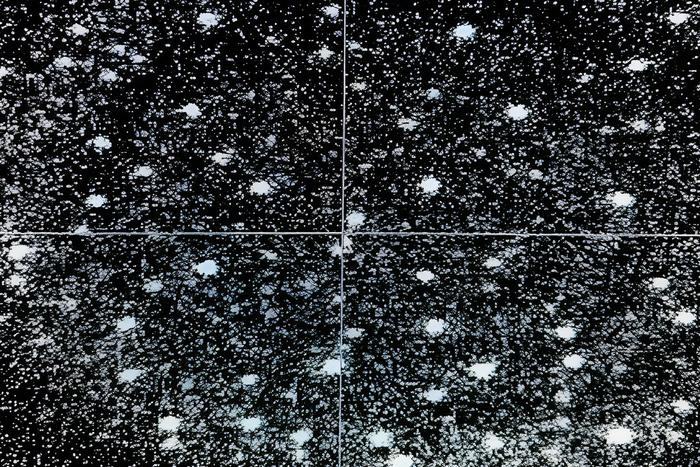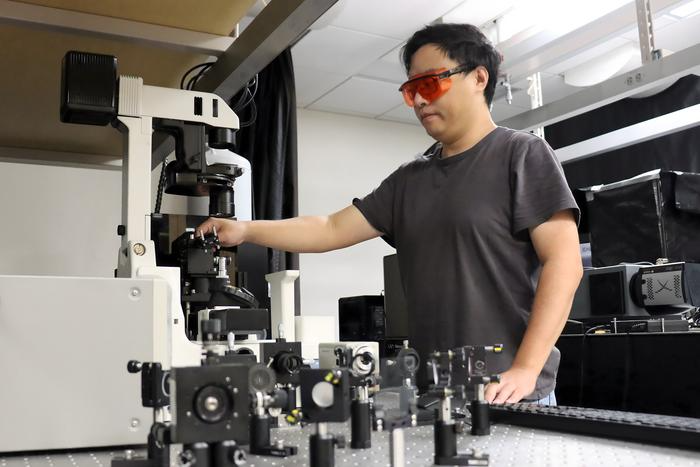Please could you introduce yourself and your current research activities?
My name is Yitong Dong. I am an Assistant Professor of Chemistry and Biochemistry at the University of Oklahoma. My current research focuses on synthesis and spectroscopy studies on colloidal nanocrystals. Our research goal is to develop high-performance quantum light sources based on nanocrystals.
You recently received the Department of Energy Early Career Award from the U.S. Department of Energy (DOE). What is this award and why did you apply?
The U.S. Department of Energy (DOE) Early Career Research Program provides funding opportunities for researchers in universities and DOE national laboratories. This program supports individual researchers in various disciplines at the outset of their careers.
As a scientist, I applied for this award since it will provide an outstanding opportunity for me to establish advanced optical instrument tools for studying the optical properties of nanocrystals. The five-year support will significantly help me and my research team to advance nanomaterials science and their impacts on future quantum information science.
How does it feel to be the recipient of this award, and to represent the University of Oklahoma nationally?
I am humbled and honored to be one of the recipients of this award. Nanoscience has always been fascinating to me and I hope our research will intrigue more young scientists to contribute to the STEM field. The University of Oklahoma (OU) is very supportive of early career faculty, including me.
OU is building a world-class team and advanced research institute on quantum materials and quantum information science. The support of this project will also help me contribute to the university’s strategic plan and boost our STEM research leadership.
Could you outline the project and its main goals?
The overall goal of my research group is to study the single photon emission dynamics of perovskite nanocrystals for the development of quantum light sources for quantum communication network construction. This project aims to understand the relationship between surface lattice rigidity of perovskite quantum dots (QDs) and their single photon emission dynamics.
Nanocrystal luminescing in solution. Image Credit: University of Oklahoma
What are nanocrystals and why are they so exciting for next-generation communication technologies like quantum-based devices?
Nanocrystals are crystals of teeny-tiny sizes: the size of nanocrystals is usually only a few billionths of a meter. The nanocrystals are so small, and they behave like individual atoms but can emit very bright light. Most importantly, nanocrystals can potentially regulate their emitted light in a way that only one photon (the unit of light) is emitted at a time.
The single photon stream can be coded with information that is effectively undecipherable. Therefore, nanocrystals can potentially be single photon emitters that power photonic-based quantum communication devices. Moreover, our colloidal nanocrystals are low-cost and operatable at room temperatures. These will promote the future deployment of quantum-based devices.
Your research group has developed the ability to produce extremely small nanocrystals. Could you explain how this technology works?
In this project, we will work with a unique nanocrystal material called strongly confined perovskite nanocrystals, referred to as perovskite quantum dots (QDs). This material grows so fast it is very hard to regulate the size of the QD by controlling the reaction time since small nanocrystals always have a tendency to grow larger. Instead, we applied thermodynamic control to control the size of the perovskite QDs. In doing this, the high halide ion concentration will make the smaller nanocrystals more stable. Therefore, we can produce extremely small perovskite QDs.

Close-up “chocolate chip cookie” surface lattice of a perovskite nanocrystal. Image Credit: University of Oklahoma
How does it compare to existing nanocrystal fabrication devices that are available?
Existing single photon sources with good performance are often based on epitaxial-grown GaN. While they also behave like nanocrystals, their luminescent efficiency is usually very low at room temperature. Therefore, the devices based on these crystals will need expensive liquid helium and ultra-high vacuum to operate.
Our colloidal nanocrystals, on the contrary, have near-unity luminescence efficiency at room temperature. Furthermore, compared to traditional GaN-based devices, our nanocrystal is much more cost-effective.
What are some of the challenges that quantum-based technologies face? How might your research and the project help to address these problems?
One important category of quantum-based technologies is the photonic quantum network, which requires single photon emitters. Although colloidal perovskite nanocrystals are promising single photon emitting materials, they still suffer from unstable emission intensity as well as insufficient single photon emission purity and photo coherence. Our research will reveal the relationship between the surface lattice structures and these important single photon emission properties. By controlling the surface lattice structures, we expect to significantly improve single photon emission properties of individual perovskite nanocrystals.
Although small perovskite nanocrystals are expected to have good single photon emission properties, their current experimental demonstrations fall behind. This is potentially due to their large surface area, but fragile and flexible surface lattice structures.
Based on our test results, their single photon emission properties can be largely affected by their surface lattice rigidity. However, chemical control of the surface lattice rigidities is yet well achieved, barring the study Of their effects on single photon emission properties. In this project, we have developed a new method to control the surface lattice.

University of Oklahoma professor Yitong Dong demonstrating nanocrystal structures in his lab. Image Credit: University of Oklahoma
In your opinion, why is it so important to invest in early-career professionals, and how can this help to take innovations in fields like nanoscience to the broader industry?
Young professionals are often passionate about science and technology. After all years of hard work, they have finally set up their new lab and are ready to jumpstart their research activities. However, early career faculty members are also facing many challenges: They are still getting training to become independent investigators, and their new teams will need support to increase productivity. Investing in their projects can fully unleash their potential and will increase the creativity of the STEM field.
Nanoscience, especially nanocrystals, is a relatively new field of research. Their fascinating physical and chemical properties require intensive fundamental studies to be fully leveraged in broader industries. Support of early career professionals will intrigue in-depth understandings of new materials and their properties to help implement new materials into existing industries and create new opportunities such as photonic quantum-based devices.
What are the next steps for your research?
In view of fundamental science, the structural light-emitting properties of perovskite are not yet fully understood due to the lack of control over their surface lattices. Other than single photon emitting dynamics, their photodegradation mechanism, light-matter interaction at nanoscale, and exciton fine structures remain elusive. The project will enable us to study these properties. Furthermore, we will extend our studies to new perovskite-like nanocrystals.
In terms of applied research, we will design and construct devices with optical cavities to further improve the single photon emission performance of perovskite nanocrystals and fabricate real single photon emission devices for photonic networks.
Where can our readers go to stay up to date with this project and your [the lab’s] activities?
Please check our website and social media accounts for updates.
About Dr. Yitong Dong
 Dr. Yitong Dong is an assistant professor in the Department of Chemistry and Biochemistry at the University of Oklahoma. His research focuses on developing and synthesizing semiconductor nanocrystals and elucidating their photophysical and electronic properties for quantum photonics. Dr. Dong has published > 40 peer-reviewed papers cited in the literature > 5000 times.
Dr. Yitong Dong is an assistant professor in the Department of Chemistry and Biochemistry at the University of Oklahoma. His research focuses on developing and synthesizing semiconductor nanocrystals and elucidating their photophysical and electronic properties for quantum photonics. Dr. Dong has published > 40 peer-reviewed papers cited in the literature > 5000 times.
Disclaimer: The views expressed here are those of the interviewee and do not necessarily represent the views of AZoM.com Limited (T/A) AZoNetwork, the owner and operator of this website. This disclaimer forms part of the Terms and Conditions of use of this website.


